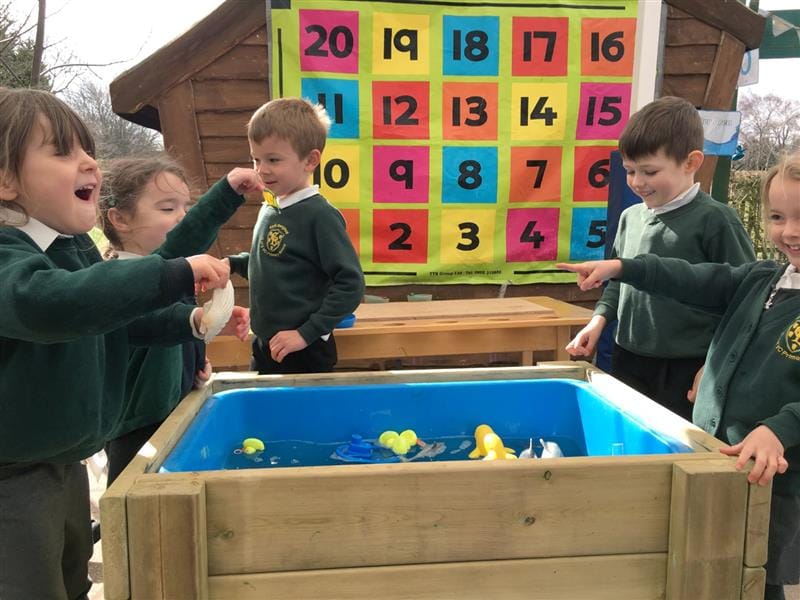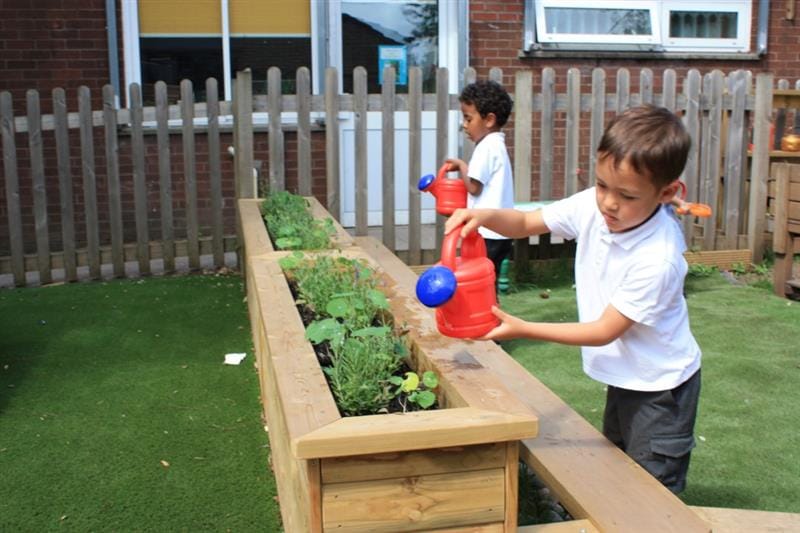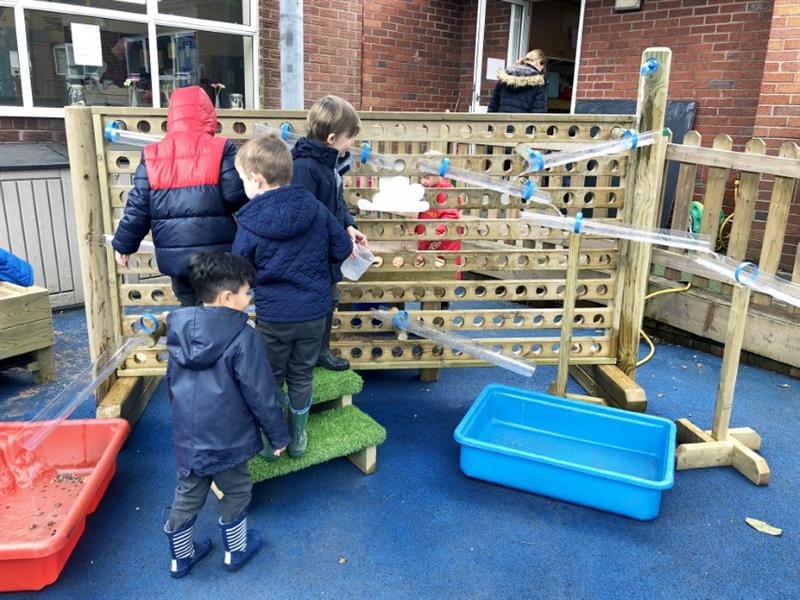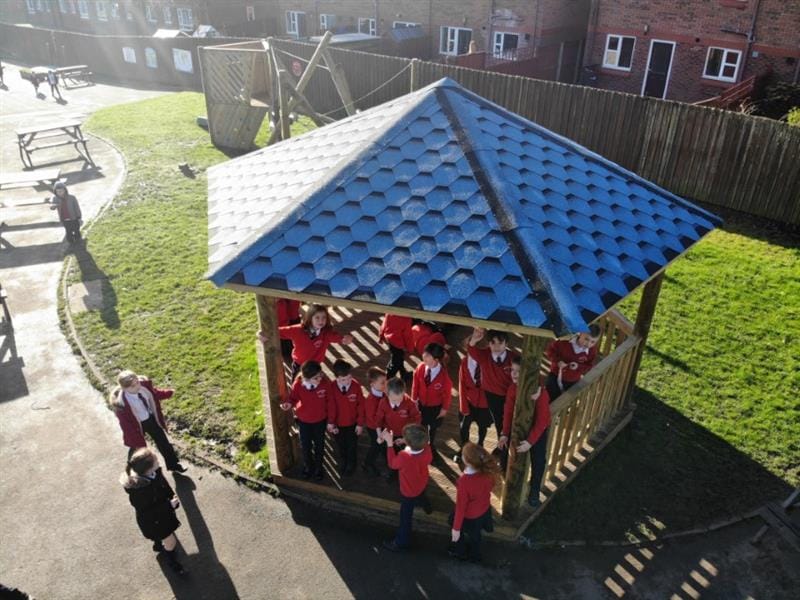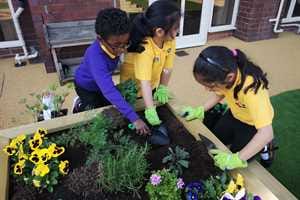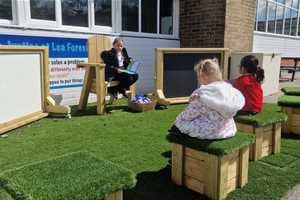
Outdoor Learning and Play
Ideas for getting out and about in the Winter Weather!
During winter we tend to look outside from our cosy spot and decide that it’s probably best to stay indoors. Like animals, we have a tendency to hibernate throughout the season! However, even when hibernating, animals are never far from the natural world and if we adapt our approach, we too can enjoy nature during the coldest season. Even spending a small amount of time outdoors can have huge benefits.
Outdoor play in the fresh air can actually benefit our health and boost our immune system. In poorly ventilated indoor environments bacteria and viruses can thrive, therefore spending a proportion of time outside daily can actually help to prevent the spread of infection.
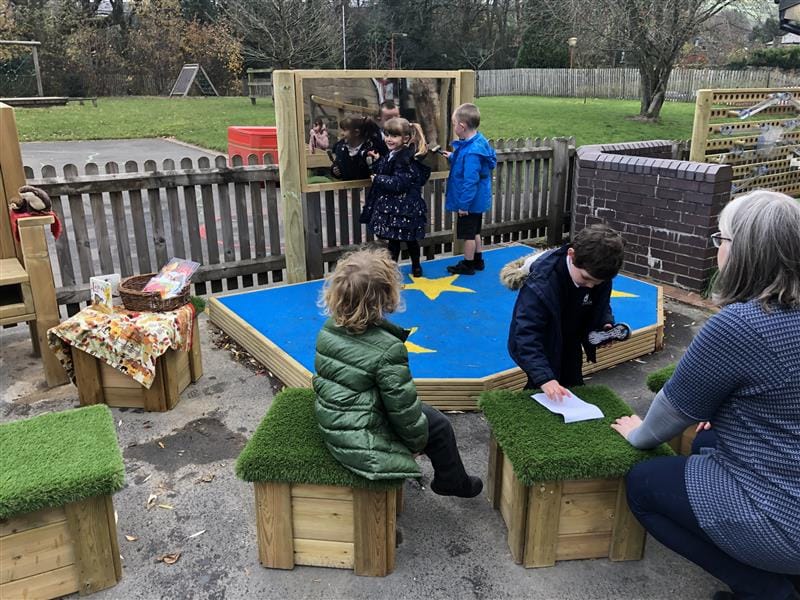
Get Active Outdoors
Young people are advised to undertake 60 minutes of daily physical exercise. Just because it is cold outside, children don’t lose their energy or desire to engage in active play. Lengthy sessions of inactivity can coincide with childhood health conditions such as obesity and cardiovascular disease. More time spent outside can even benefit children’s sleep patterns, helping them to feel more tired at night. The ever-changing outdoor environment can help to stimulate children and promote essential gross motor development.
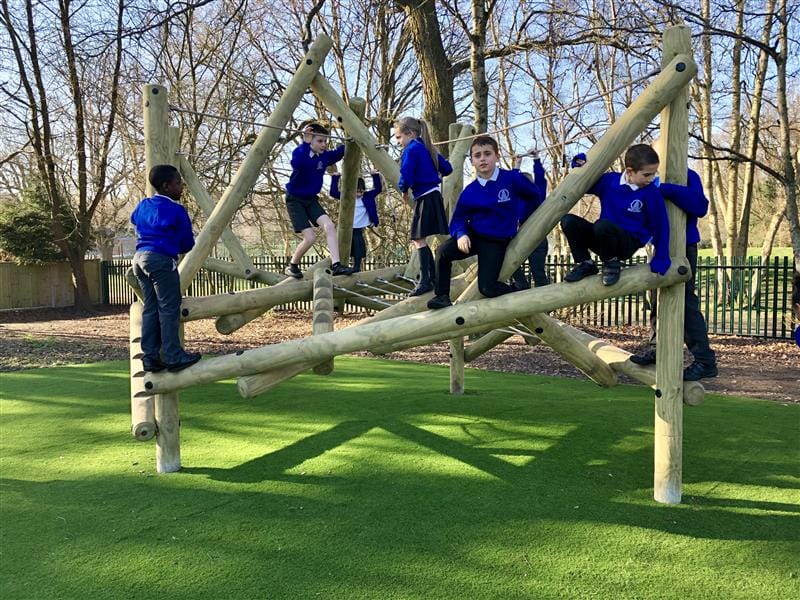
The winter season can ignite children’s senses and boost their imaginations. Changing weather conditions can involve problem solving, slippery surfaces require children to consider their footwork, leading to improved balance and coordination. Wind, rain and snow presents challenges which help to develop children’s ability to assess risks.
Outdoor play in winter can provide pupils with unique opportunities to explore and create fantastic memories. Wrap up warm, grab waterproofs and wellington boots and get ready for some winter adventures this season!
.jpg)
Ice Adventures
The exploration of ice and frost often fascinates children and provides a wonderful sensory experience. Some children will find it magical to hold ice and watch as it moves, melts and slips through their fingers.

One of my favourite seasonal decorations to make is Ice Sun Catchers.
Children collect a variety of natural objects such as twigs, leaves, berries and pine cones and place them into different shallow dishes and recycled containers. Once filled with water the vessels need to be left over night or possibly longer. If you add a ribbon or string through the container you will be able to hang your frozen sun catchers on tree branches. Pupils will be able to talk about the changes to texture and temperature that they observe.
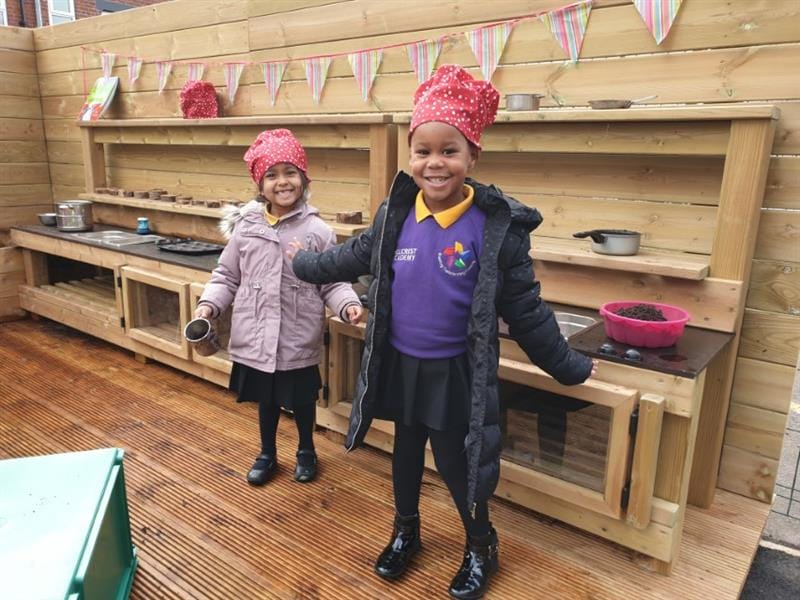
Freezing water in different shaped containers and items such as rubber gloves and balloons can create interesting objects for children to investigate. Toys and natural objects can be placed inside the containers which children can try to set free using tools and by learning how to fill pipettes with warm water. Pupils can talk about how the ice feels as it changes state. This activity supports fine motor development and encourages children to extend their vocabulary (freeze, melt, frozen, change, colder, icy, slippery, frosty, hard) as they talk about how the ice looks and feels.
Older children may explore adding salt to ice. Salt lowers the freezing point of water causing ice to melt quicker. Children could experiment with different types of salt and discover which type may be best to grit roads in winter.
Filling Tuff Spot Tables with water before cold nights can create large, icy puddles. Children will enjoy trying to shatter the ice, creating pieces of different sizes. Pupils could transport pieces of ice to grassy areas and create some icy artwork in a mosaic style. Natural items such as branches, seeds and leaves could be added as pupils discuss how their pieces of ice fit together and the pictures they are creating.
Pentagon’s Water Channels make the perfect frozen slides for toy penguins and polar bears as they slip and fall whilst pupils learn about the effects of gravity and friction.
Mark Making
A frosty morning can provide a brilliant mark-making opportunity! Pupils will enjoy using twigs, pencils, rakes, tyres and broom handles when making marks on a variety of different surfaces in the outdoor area.

Children can be challenged to make straight, diagonal, curved, wavy and zig zag lines. They can create picture patterns and practise writing their name.
Ice paints can be easily made by filling an ice tray with water and squeezy paint. A wooden lolly stick needs to be added to create a handle and once frozen pupils have a new medium which they can’t wait to explore!

Paper can be attached to easels in the outdoor environment allowing children to make large arm and shoulder movements, supporting gross motor development.
Snow Days!
Snow can be an amazing natural resource allowing plenty of open-ended opportunities for play and exploration.
Snow is a great building material, helping children to create their own narratives and supporting mathematical thinking. Pupils may enjoy creating a snow family or they may start small in their creations by making mini monsters or homes for the snow babies.
Colour can be added to snowy creations by painting directly onto the snow or making spray or squeezy bottles by adding cornflour, water and food dye.
Snowballs can be formed and used for target practise to aid spelling. Letters can be drawn onto walls or magnetic letters can be stuck on. Pupils can practise hitting correct letters or can spell out a word.
A box of toy vehicles such as cars, trucks and diggers often appears much more fun when used to transport snow! Toy body parts such as plastic eyes, ears, mouths and hats can also be taken outside to create snow people which encourages creativity and supports language development. Snow is also a great alternative material for creating delicious treats in a mud kitchen!
A quick walk often breaks up a long day indoors and during snowy conditions children may enjoy completing a scavenger hunt, ticking off items on their list as they find them. Pupils may be in search of natural items or practitioners could partially hide objects of different colors and shapes for children to discover.
Windy Weather
Windy weather can be something of a mystery to children, they can’t see wind but they can feel it! Allowing pupils to experience the strength of windy weather can lead to fantastic learning experiences.
Young children notice the effects of wind when they see leaves, flags or smoke blowing. Pupils can also try to ‘fly’ different objects in windy conditions, observing how they move and how far they travel. Feathers, ping pong balls and paper aeroplanes will all take flight!
Pupils can feel the power of the wind by using scarves, holding pieces of fabric or attaching ribbon to hoops. Children will enjoy holding on tightly as the wind catches the fabric and the material blows about in the air as they run and dance. Wind socks can be attached to tree branches which allows classes to explore wind force and direction.
Children can try running with the wind behind them and in front of them. They can see what happens if they hold a large piece of cardboard or create wings with their coat. Pupils could try different materials which are the same size and observe the effects when held up to the wind.
Blowing bubbles and throwing leaves into the air are fun activities which allow children to watch how objects float and catch the wind. Making kites and windmills are great practical problem-solving activities which allow children to observe the direction of the wind and can brighten up flower beds too!
Simple boats can be made from recycled materials such as foil trays and margarine tubs. Children will enjoy watching them set sail on a windy day in the water table or across puddles.
The home corner will be a hive of activity on windy days as children wash a selection of baby clothes and hang them on a line outside. They can observe how the clothes move and the effects of weather conditions on drying time.
Freestanding Outdoor Musical Instruments can be played on windy days, children will listen and learn how sound travels in windy conditions.
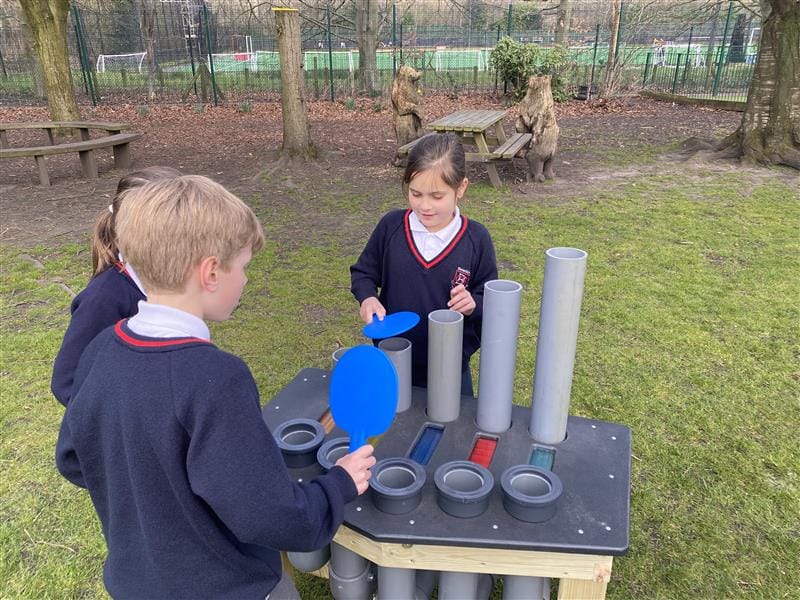
Dance in the Rain!
Every so often a rainy day can involve putting rainsuits and wellingtons on and venturing outside. My own children are naturally drawn to puddles, they see one and they want to jump in it, regardless of their footwear choice!
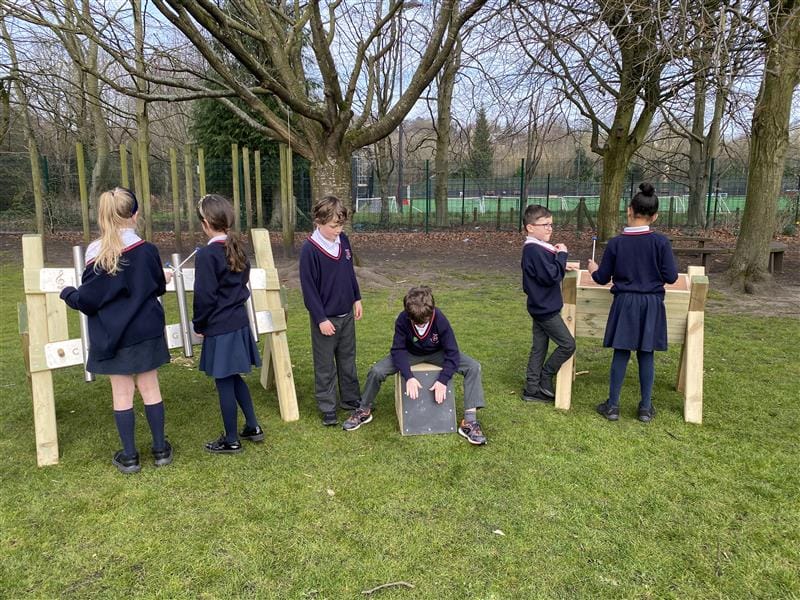
There is often pure joy on children’s faces when they are splashing, dancing and jumping about singing songs and nursery rhymes in puddles. Row, Row, Row Your Boat, It’s Raining, It’s Pouring, There’s a Hole in the Bucket and Singing in the Rain are great song choices which soon get everybody joining in. Even allowing children to feel raindrops on their face and cup water in their hands can be a wonderful sensory experience for some.
Listening to the falling rain can be soothing and calming. Pupils can replicate hard and soft rain sounds using Freestanding Chimes or a Tongue Drum. Creativity and problem-solving skills can be put to the test when making a den on a rainy day. What could be better than using Pentagon’s Den Making Posts to create a sheltered spot to observe rainfall from?
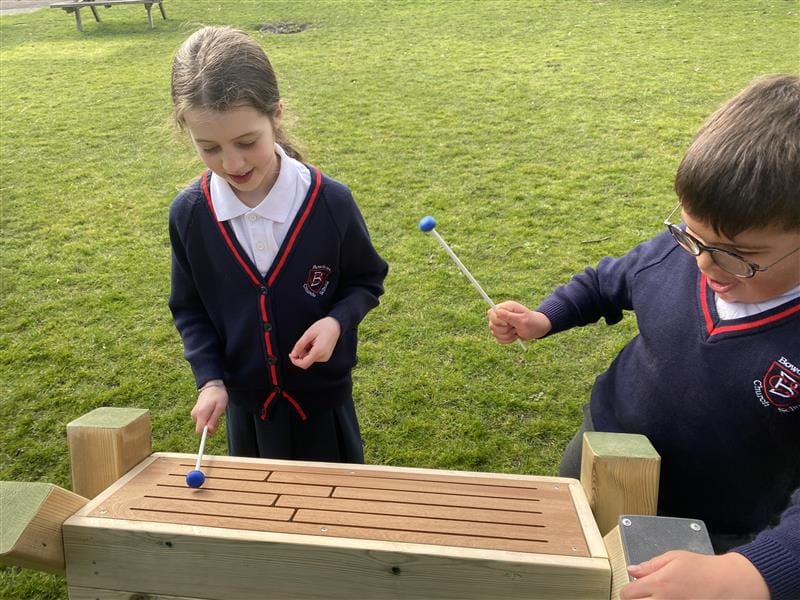
Making puddle soup can help children to develop fine motor skills and build vocabulary. Buckets, scoops and spoons can help pupils to engage with others, they may also like to experiment with mixing by adding washing up liquid, cooking oil or food colouring to puddles. Older children can learn about evaporation when studying the water cycle by recording the size and shape of puzzles and measuring them over the course of a day.
Pentagon’s Water Play Package is so much fun on rainy days! Pupils will be able to make rain flow in different directions by manipulating water channels. Floating and sinking can also be explored as children sort, count, match and make comparisons between objects.
Pupils will enjoy completing a class weather chart throughout the seasons. Rainfall could be collected and recorded and children may even want to write their own weather reports when taking to the stage as forecasters.
Playing outdoors during winter provides children with first-hand experience of a variety of weather conditions. If children are suitably clothed and mobile enough to stay warm a world of interactive experiences await them.
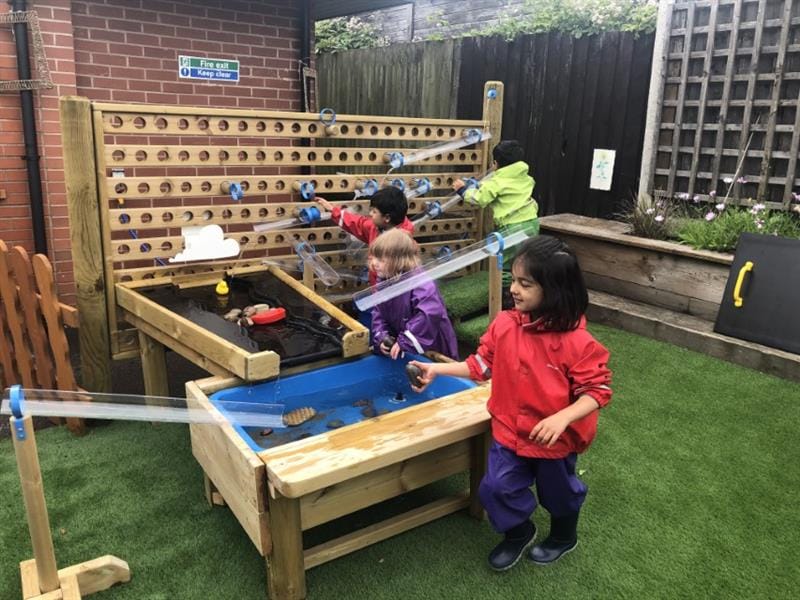
Winter weather provides pupils with a wealth of natural resources that are not available at other times of the year. Tracks can be found, ice can be broken, snow can be painted and there are endless opportunities for pupils to develop their creativity.
Outdoor classrooms can be transformed into winter wonderlands with the addition of some twinkling fairy lights, windchimes and comfy cushions. Drinking a cup of hot chocolate whist bird watching or toasting marshmallows whilst listening to stories can become life-long memories. As adults we sometimes view winter as a season to be endured but for curious little learners there is magic to be found. Let’s step outside this year and recapture the wonder of winter.
.jpg)

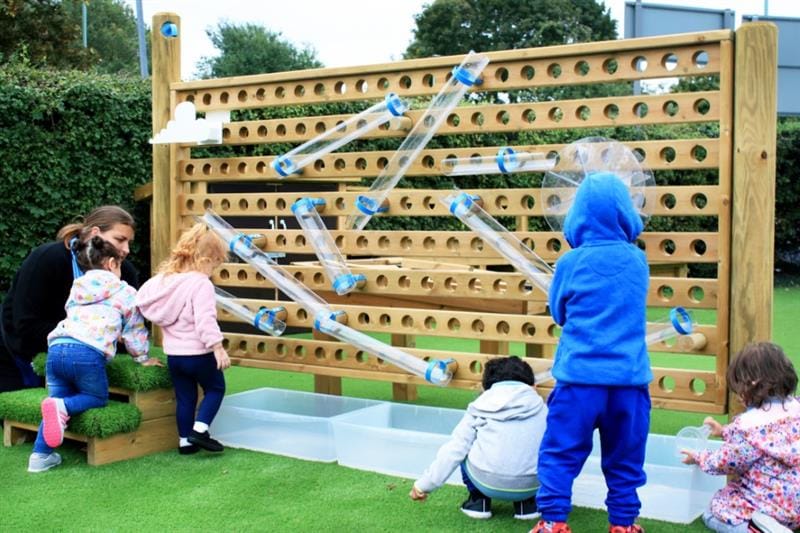
.JPG)
.JPG)
.JPG)

